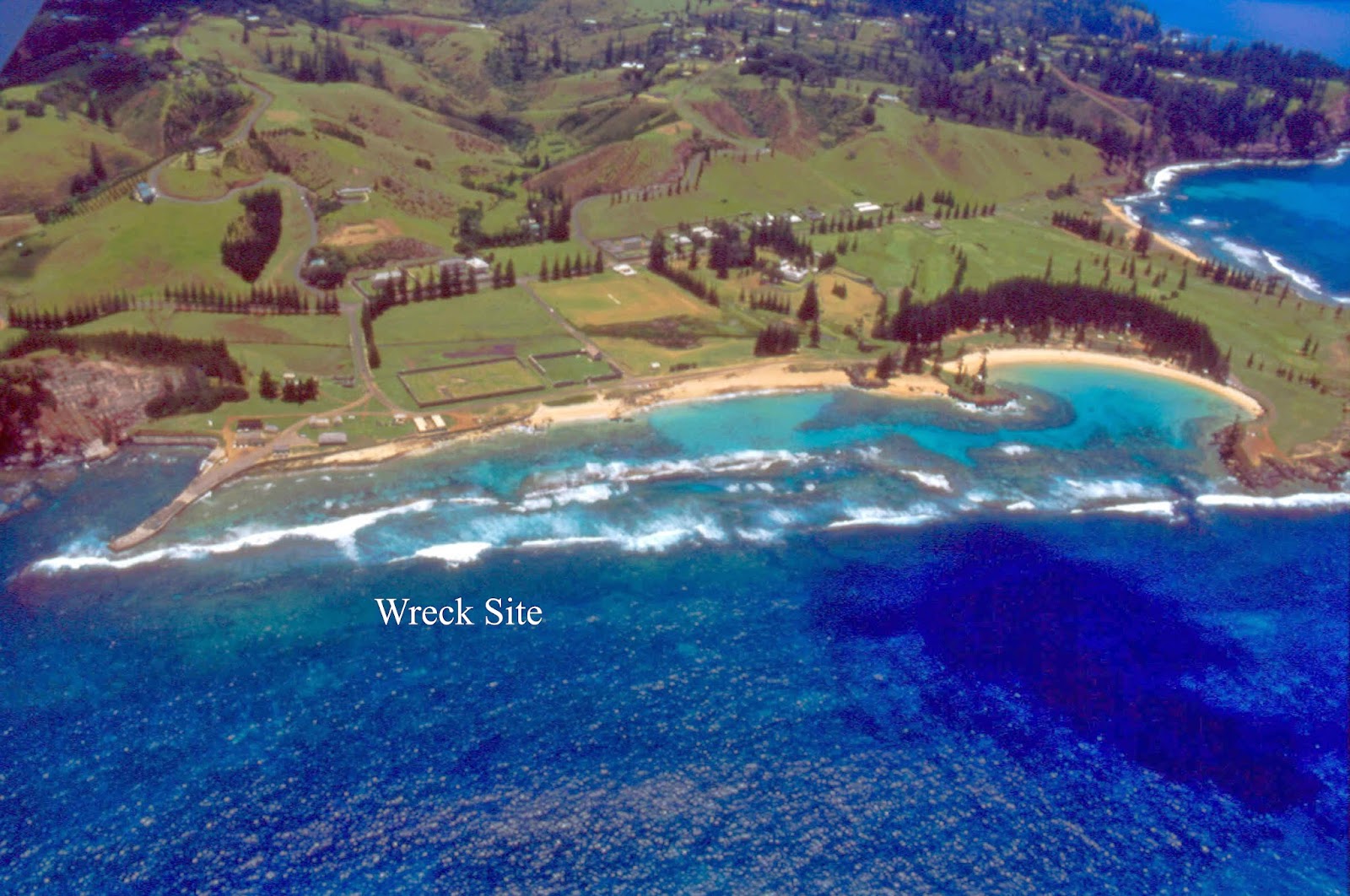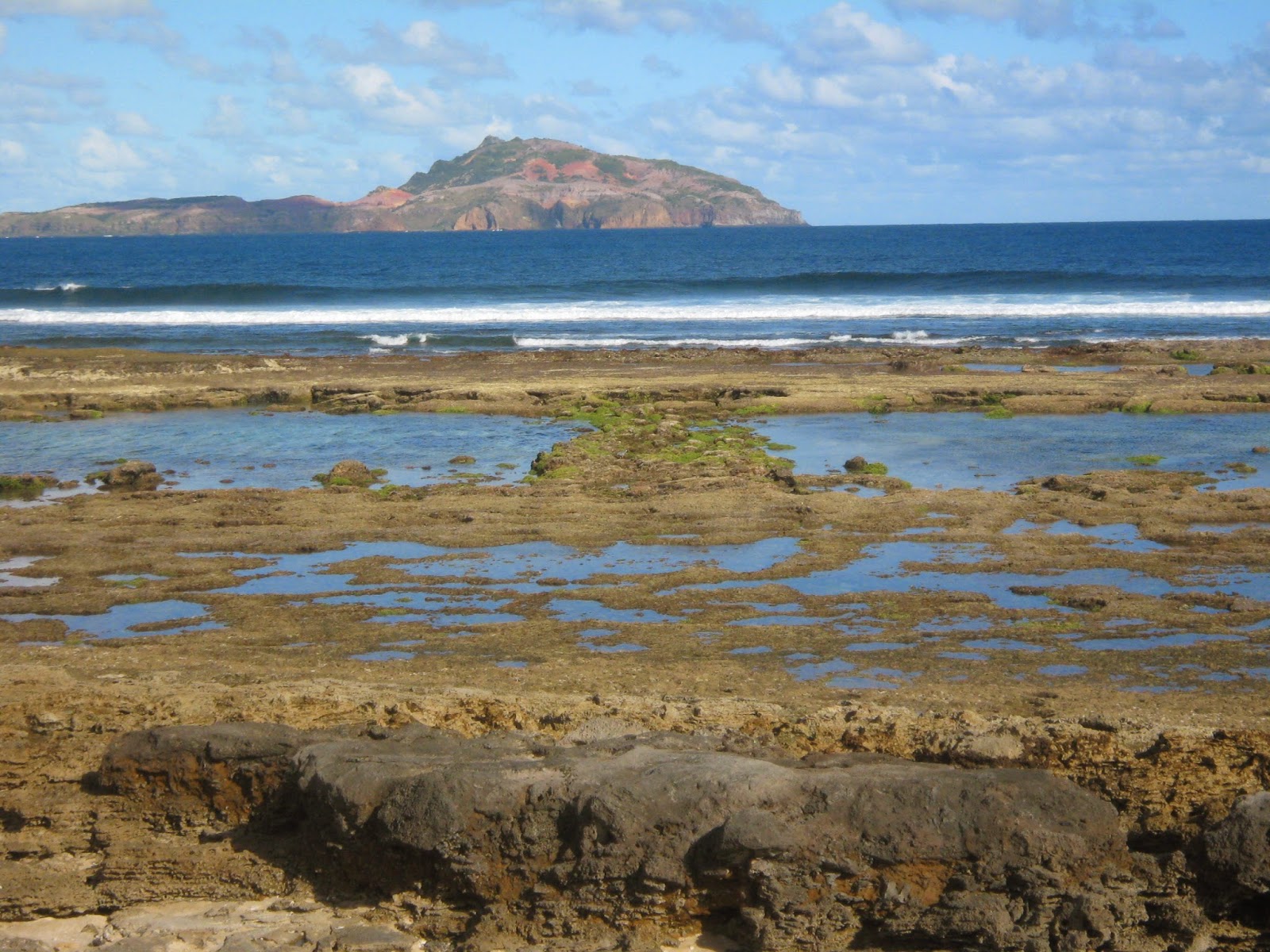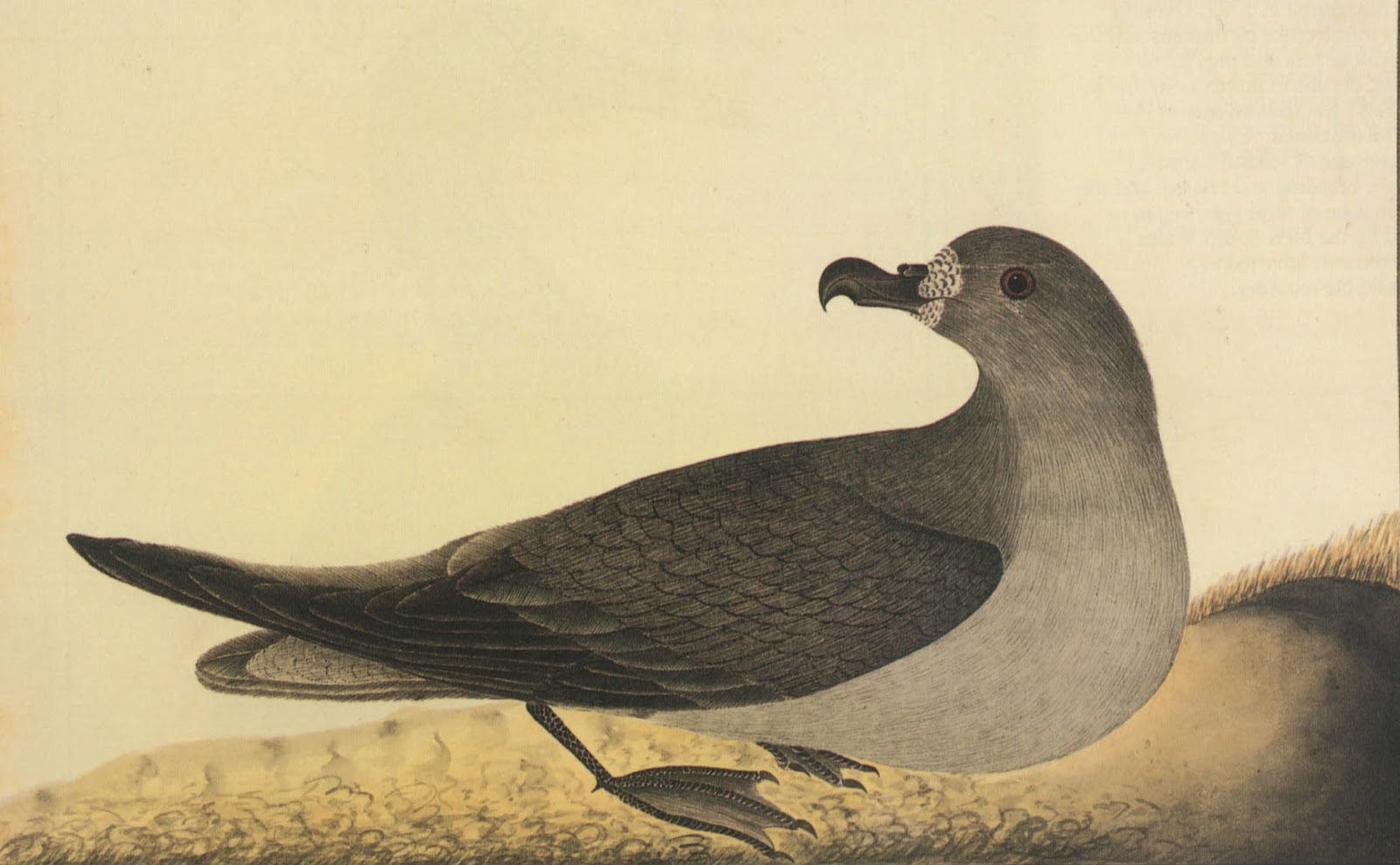Midday Wednesday 19th March was the 224th anniversary of the wrecking of HMS Sirius on Norfolk Island. It was in 1790 that the disastrous wrecking of the flagship of the First Fleet occurred, leaving the struggling settlements here and in Port Jackson in a desperate situation. Just 3 years earlier the Sirius had led the fleet of eleven ships that set out from England carrying the people who would start a new Nation on the other side of the world. She was a vitally important ship to the settlements struggle for survival in their new, isolated home and the only real means of contact with the outside world.
At the time of its wrecking the Sirius was on a desperate mission. Since 1788 both communities had lived not far from starvation. In late 1788 Captain John Hunter, master of the Sirius had taken her on a voyage to Cape Town for supplies. However by the end of 1789 Sydney Cove was still starving. The plan was to send the Sirius to the Chinese port of Canton to obtain food and supplies. To relieve the pressure at Sydney she would be accompanied to Norfolk by HMS Supply, the smallest ship of the First Fleet. Together they would transfer 275 people to Norfolk Island (116 convict men, 67 convict women, 27 children and 65 marines).
Both ships had arrived at Norfolk Island on 13 March 1790 through terrible weather. Because of the conditions they could not risk the usual anchorage position off the settlement at Sydney Bay (Kingston) and had sailed around to Cascade Bay. By 15 March all the people had been put ashore but the weather worsened and both ships were forced out to sea. After three long days they finally re-appeared at Sydney Bay.
By morning 19 March 1790 the Supply had completed unloading supplies and the Sirius had just begun when Captain Hunter noticed they were beginning to drift in to close to the reef. The Supply was already under sail and her Captain, Lieutenant Henry Lidgard Ball called out to Hunter, waving his hat towards the reef to warn that both vessels were coming perilously close to it. Immediately, Captain Hunter gave the order to sail windward on a port tack. At this point the Supply was ahead, but leeward of the Sirius. However just at the critical time that they sailed off – the wind shifted direction two points to the south. This wind shift was to spell disaster for the Sirius. It was now impossible for the ships on their port tack to clear the rocks off Point Ross.
The Supplywas able to pass just clear under the Sirius’ weather bow by taking a starboard tack and desperately, Hunter tried to do likewise. The ship failed to tack and fell off the wind so he had to change to take the tack by turning the ship’s head away from the wind, endeavouring to sail east past the landing point and off between Nepean Island and the eastern point of Sydney Bay. He desperately tried to change tack then frantically cut away the anchor, halyards and sheets in the hope that would slow them down. But the wind just blew the ship backwards until, as he describes in his Journal “she struck upon a reef of coral rocks which lies parallel to the shore, and in a few strokes was bilged”.
Amongst those watching on the shore was Norfolk Island’s Commandant, Philip Gidley King. Surely belying what he would have felt, his Journal records the event with little emotion “at Noon the Sirius having twice missed Stays & being Embayed, struck on the outer part of the Reef”. King would return to Sydney Cove on the Supplyto deliver the news to Governor Arthur Phillip. He wrote “You never saw such dismay as the news of the wreck occasioned amongst us all; for, to use a sea term, we looked upon her as our sheet anchor”. Luckily there had been no loss of life from the wrecking, however the Sirius had been the main means of contact with the outside world for both Settlements.
On Norfolk Island the effects were felt immediately. With an ‘overnight’ doubling of the population, food and other supplies were now seriously short. Starvation was a real possibility. Within a week martial law had been enforced. Lieutenant Ralph Clark of the Royal Marines had been on board the Sirius for the journey to Norfolk Island, and had been put ashore at Cascade before the wrecking. His diary entry expresses their fears: “Gracious God what will become of us all, the whole of our provisions in the ship, now a wreck before us. I hope in God that we will be able to save some if not all but why do I flatter myself with such hopes – there is at present no prospect of it except that of starving”. Starvation was averted by the arrival of over 200,000 migratory birds nesting on Mount Pitt in the following four months. Eventually hunted to extinction in Norfolk Island they christened the birds ‘Providence Petrels’. Midshipman George Raper captured not only the wreck on the reef in his painting, but also the emotion of her loss with the title “The Melancholy Loss of HMS Sirius, off Norfolk Island March 19 1790” (National Library of Australia).
Immediately the Sirius ran aground as much as possible was thrown overboard with the hope it would float ashore. To rescue the crew a rope was fastened to a barrel and floated ashore, then fastened to a pine tree allowing the men to scramble to shore. Convicts who volunteered to rescue the livestock broke into the rum supply and caused a fire, resulting further loss of precious supplies. In the following weeks it was decided to strip the ship of hardware so desperately needed on the island. Sails, hawsers, masts and spars, fittings and the timbers of the ship itself were removed until she was down to the waterline. It took two years to do this, finishing with fifteen cannons being removed in 1792. Before long all trace of the Sirius disappeared from view.
Today of course, the important HMS Siriusartefacts are housed in the Norfolk Island Museum, within view of the shipwreck location. Together with the story of their modern day recovery they sit on display alongside the stories of Captain John Hunter, Lieutenant Ralph Clarke and the other marines, convicts and civilians whose lives were all sent into turmoil that day 224 years ago, midday 19thMarch 1790.



